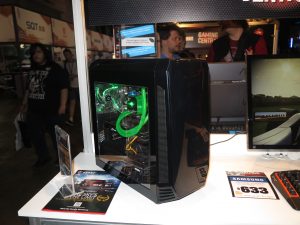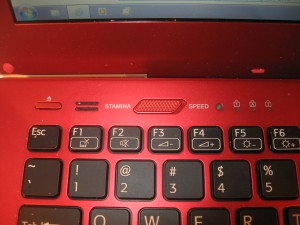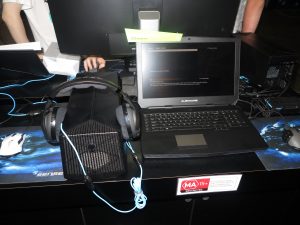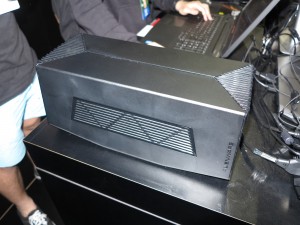What is a GPU all about?
Article
What Makes A GPU Different From A CPU? | Gizmodo
My Comments
A graphics processing unit or GPU is a special data-processing chipset that effectively “paints” the images that you are to see on your computer screen. This is compared to the central processing unit or CPU which is focused on handling the data that your computer is dealing with at your command and being the system’s “commander” processor.
The idea of a separate processor is to effectively work with the shapes, pixels and colours that constitute what you see on the screen and the highly-sophisticated GPUs handle this using multiple “cores” or unique processors. Another factor worth considering is that video editing, animation and transcoding programs are making use of the GPU to transcode the video material between different formats or rendering an animation or a sequence of shorter video clips in to one longer video clip.
The higher-performance GPUs, typically offered as display cards that are installed in desktop computers especially “gaming rigs” set up by computer-games enthusiasts, use multiple “cores” or unique processors so they can realise the high-resolution graphics very quickly and responsively. Some of these cards even implement setups like “Crossfire” with the ability to gang two display cards together for increased performance.
Integrated vs dedicated GPUs
Typically the difference between an integrated or dedicated GPU is that a dedicated GPU has its own memory and other resources for “painting” the graphics images while an integrated GPU “borrows” resources like RAM memory from the system’s CPU. As well, a lot of these dedicated GPUs are designed and developed by companies who specialise in that field.
The benefit of a dedicated GPU is that it can turn out the graphics images required by demanding applications like games, video editing, CAD and the like efficiently because its resources are focused on what you see while the CPU and system RAM are focused on working out what is to happen.
For example, a game needs the use of the CPU to answer the players’ commands, apply the game’s rules and position each of the elements while it needs the GPU to visually represent where everything is. Here, the dedicated GPU can handle how everything is represented without encumbering the CPU’s tasks relating to how the game runs.
The main disadvantage with dedicated GPUs that affects laptops and other portable computers is that they can quickly drain the computer’s battery. This has been answered in a few ways like equipping laptops with integrated and dedicated graphics chipsets and adding logic like NVIDIA’s Optimus to switch between the different chipsets, in a similar vein to how the overdrive or “sports mode” in some cars work. In most cases, this logic engaged the dedicated graphics if the computer was running a graphics-intensive program like a game or video-editing program or was running on external power.
External GPU docks
A new trend that is starting to appear and benefit laptop-computer users is the “external GPU” dock or module that connects to the laptop computer. These appear in two different forms – a “card cage” like the Alienware Graphics Amplifier where a user can install a desktop graphics card, or a graphics module which has the graphics hardware installed by the manufacturer.
Initially these devices were connected to the host computer using a connection that was proprietary to the manufacturer but now they are implementing the Intel Thunderbolt 3 via USB Type-C connection due to it offering PCI-Express data-transfer bandwidth, thus allowing for increased interchangeability between computers and docks. Most of these implementations will have the ability to send the graphics back to the host computer’s screen or to an external display that is connected directly to the external GPU module.
These devices have appealed as a way to “option up” laptop, all-in-one and similar computers for high-performance dedicated graphics. It is more so where you don’t need to have dedicated graphics all the time, rather when you have that laptop or 2-in-1 “back home” and ready to work or play.
Conclusion
The graphics processors or GPUs, whether integrated on a computer’s motherboard, installed on a display card or housed in an external GPU module, are processors that look after “painting” the images you see on your computer’s screen.





